Rhododendron yellow: description of varieties, planting and care
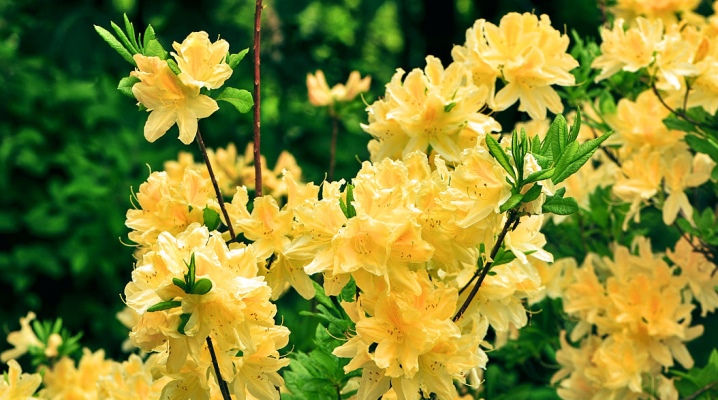
Rhododendron yellow belongs to deciduous plants. Most of it grows in the east of Europe (Poland, Ukraine, Belarus). In Russia, this type of culture is found in the southern territories, for example, in the mountainous areas of the Caucasus. The plant prefers dry places, has good frost resistance. We'll talk more about Rhododendron lutea in the article.

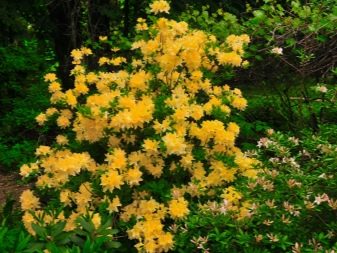
Characteristics of varieties
The name of the shrub has Greek roots. So, rhododendron (Rhododendron) literally means "rosewood". However, the flowering bush does not belong to the Rosaceae family, its relative is the heather family. Among Russian flower growers, another name appears - azalea, however, from the point of view of botany, this is not entirely true.
Other types of flower fall into the category of yellow (lutea) varieties - for example, Sylphides, Homebush. They differ in the color of the blossoming buds, as well as the size and shape of the flowers. A common trait that unites them all is lush green foliage.
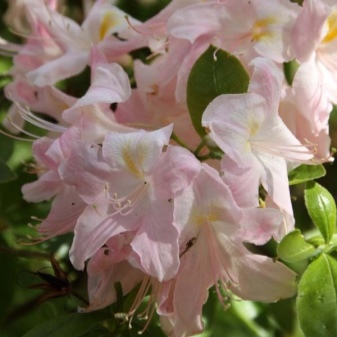
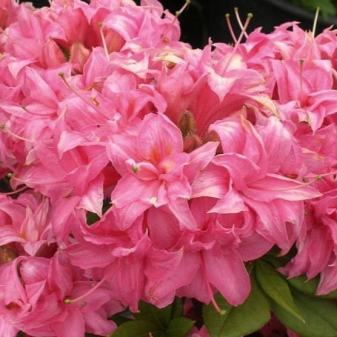
According to the description, the yellow rhododendron is a tall (up to 4 meters) lush shrub with spreading branches. The leaves are oblong, ovoid, slightly pointed towards the end. The width of the leaf varies from 2 to 8 cm, the length is from 4 to 12. If you look closely at the leaf, you will notice that its edges are framed by small denticles (cilia). The length of the petioles reaches 7 centimeters.
The flowering period is accompanied by the blooming of yellow / orange flowers on the bush, differing in saturation. Their shape is elongated (up to 7 cm), 5 cm in diameter. One bush can contain up to 20 volumetric inflorescences. In the center of each bud are curved stamens (by the way, they are higher than the corolla). The flowering culture begins in April and lasts until June. This period is characterized by a strong aroma that fills the surrounding air. At the end, a large number of oblong fruit bolls are formed on the branches of these varieties.
Closer to autumn, the foliage turns yellow and falls off. From spring to autumn, the plant can grow by about 4 cm - in the most favorable conditions, the figure reaches 15 centimeters.
It is important what you need to know about the rhododendron - a poisonous flower. Eating by animals, as well as getting into the stomach of a person of its leaves, petals threatens with severe poisoning.
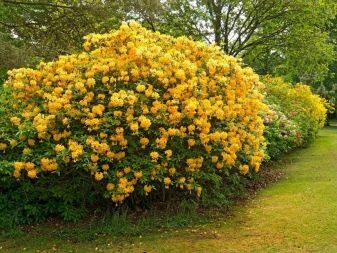
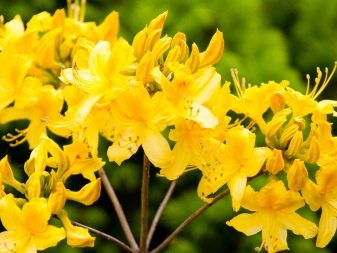
How to plant and care?
In the wild, the yellow rhododendron variety shows extraordinary results - tall, spreading bushes, bright flowering and strong aroma. Caring for a home plant does not require much effort. The deciduous species is unpretentious, tolerates low temperatures well. The main care consists in several points, without which the full growth and flowering of the shrub is impossible. Rhododendron "Silfides", "Homebush" are successfully grown in the garden, in the summer cottage, in adjoining or city flower beds.
Proper care will provide a decorative appearance to the plant, as well as protect against possible diseases and harmful insects.

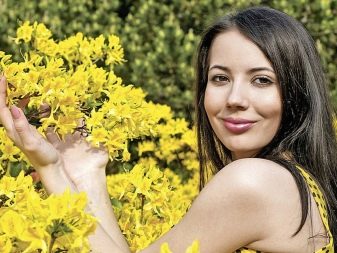
Consider the basic rules for keeping a flower.
- Lighting... The plant is light-loving by nature, but grows normally in the shade. For this reason, it is often planted near conifers.

- Watering. During the rainy season (spring and summer), this procedure is extremely rare. On dry days, it is necessary to regularly moisturize the plant - twice a week is enough.
Experienced flower growers advise to moisturize the earth in the evening, after sunset.
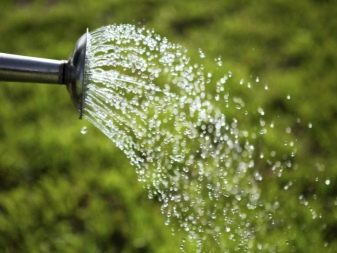
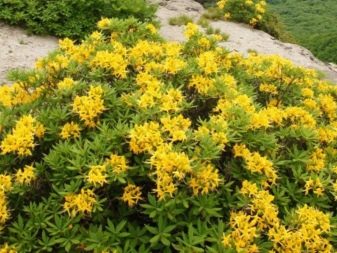
- The soil. A suitable option is soil with a high level of acidity. That is why yellow rhododendron shows good results on peatlands as well as on rocky surfaces. Experts recommend choosing porous soil for planting.
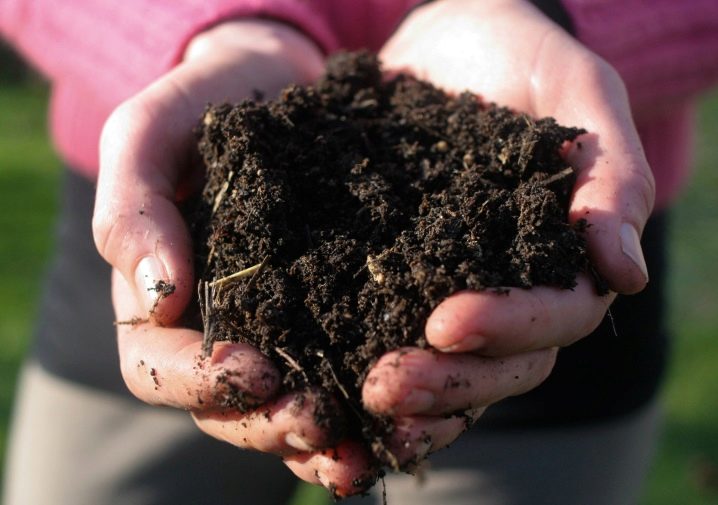
- Fertilizer. The first feeding should be done in May. It is recommended to stick to small doses with a regularity of 2-3 times a month. Balanced, mineral compositions are beneficial for the plant. Organic is especially useful. In specialized stores, it is better to buy Kemira Universal fertilizing in the form of granules - it is most suitable specifically for the yellow variety.
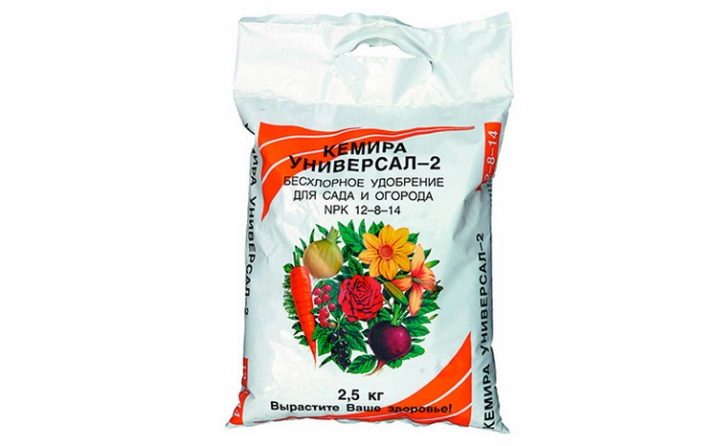
Diseases and pests
Rhododendron yellow bushes are quite resistant to diseases and pests. However, improper care can reduce the immunity of the plant, which is why diseases and other ailments develop.
Let's consider the main problems in growing.
- Flowering does not occur. The reason is a lack of nutrients, overheating of the rhizome, low or high acidity of the earth. Gardeners recommend keeping the plant correctly, that is, the root system is in the shade, the crown is under the sun.
- Chlorosis. It is evidenced by the yellowed ends of the leaves, then the color is replaced by rusty, brown. This disease appears when the conditions of detention are violated, for example, due to low acidity of the soil, feeding the bush with ash, or a large amount of clay was added to the planting mixture. To heal the flower, it is necessary to increase the level of acidity, apply fertilizer with iron chelate or ferrovite to the soil.
- Rhododendron cicada... An insect that infects the buds and buds of a flower with a fungus. In late summer, the cicada lays eggs on the branches. In addition to this, it carries a fungus that lives on the kidneys during the winter. With the onset of spring, the buds and buds begin to blacken, therefore, their development stops. In the fight against insects, treatment with insecticides, fungicides, spraying with copper sulfate will help. The affected parts of the bush should be removed.
- Phytophthora... Symptoms of diseases are wilting of foliage, yellowness of leaves with branches. The defeat spreads to the root system - the decay process begins. To get rid of the problem will help special antifungal drugs, copper sulfate. In case of neglect - dig up the bush, burn it.
- Tick, thrips, mealybug, weevil. The attacks of these pests are the most frequent. They should be dealt with with an insecticide. In addition, a soapy solution will be helpful to remove insects from the branches. In the spring, snails, slugs, settle on the foliage, which are best collected by hand.
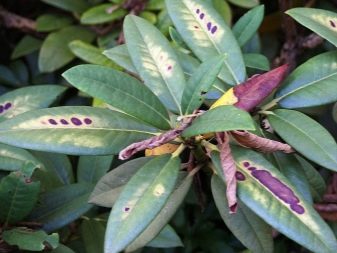
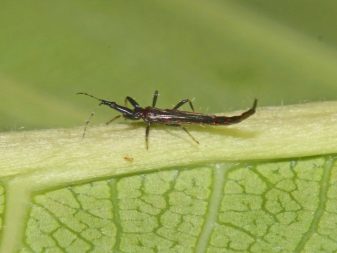
Deciduous yellow rhododendron is a perennial shrub with spreading branches. Its advantage is in multiple blooming within one year. Such a plant will be an excellent decoration for any garden or suburban area. With proper care, beautiful, and most importantly, healthy buds bloom on the bush, emitting an unusual smell.
According to gardeners and florists, it is not difficult to grow Homebush or Silfides in Russia. It takes little effort. The main thing is to choose the right place for planting, as well as provide the necessary conditions for full-fledged growth and further development.
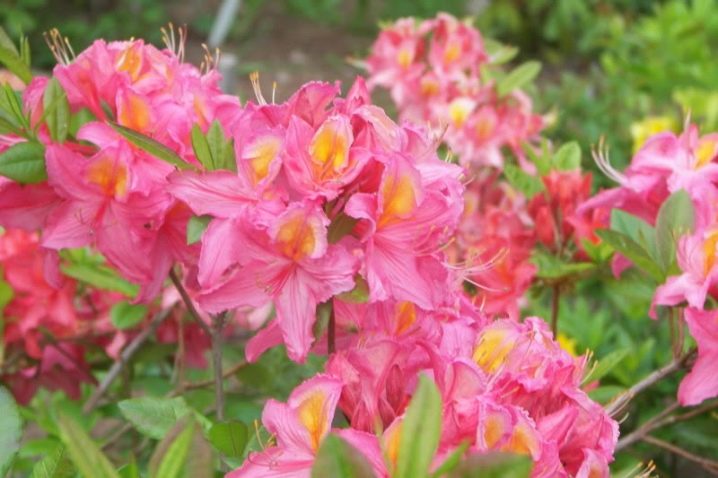
See the following video for caring for rhododendron.





































































































The comment was sent successfully.